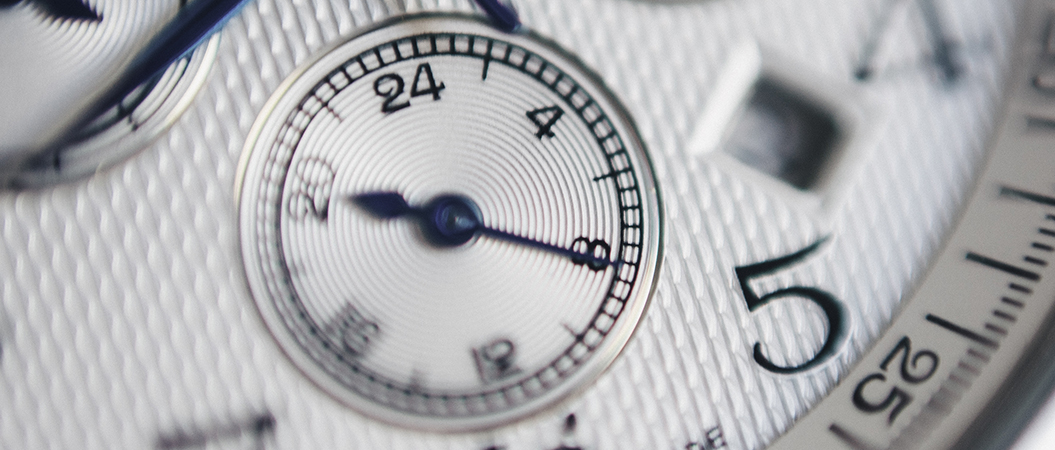Tick tock….around the clock
From complicated pocket watches to iconic clocks to decorative wrist watches… there’s a fascinating world behind the multi-billion-dollar timepiece industry
Back in time
Based on archaeological evidence, time was measured at least 5000 years ago when the Babylonians and Egyptians introduced ways to organise events and plan for planting and harvesting, using the solar day, lunar month and solar year. Fast forward a couple of thousand years and the sundial was invented, which indicated time and tracked hours by the length or direction of the sun’s shadow
While the church may have been behind early day clocks, women were associated with decorative wristwatches (men favoured pocket watches) with Elizabeth 1 being the first woman to wear a wristwatch, a gift from her alleged love Robert Dudley. The first rumblings of the wristwatch revolution for men started due to battle – a tucked-away pocket watch just wasn’t practical when you had to check the time while firing weapons or controlling an aeroplane. And so, wristwatches became popular for men in the military. Eventually, servicemen aside, it became acceptable for modern men to wear a more decorative timepiece on their wrists.
Complications and expeditions
To understand the billion-dollar watch industry (the luxury watch market is expected to grow by $1.64 bn during 2020–2024 according to the Global Luxury Watch Market 2020–2024 report), one needs to understand complications. Any functionality on a watch that serves a purpose over and above telling the time, such as water resistance, moon phase and date display, is known as complications. Dress watches have little or no complications other than simply telling the time, although they can cost as much as a small home – the Graff Diamonds Hallucination, with over 110 carats of coloured diamonds set into a platinum bracelet, at $55 million, has the title of the most expensive watch in the world. The Vacheron Constantin Reference 57260, a mechanical pocket watch, is widely regarded as the most complicated watch in the world, with 57 complications, while Breguet’s Marie-Antoinette Grande Complication pocket watch, which took 40 years to construct, is worth a cool $30 million.
Sports watches usually have many complications, and that means a lot of testing in extreme places and spaces. The Casio G-Shock – known to be almost indestructible (waterproof to great depths and shock resistant) was tested by simply throwing it out of a fourth-storey window. For maximum durability and quality, diving watches are tested until they implode. Rolex took its Deep Sea Special watch to the bottom of the ocean – nearly 11000 metres to be exact, to prove its performance under pressure. The Russian astronauts famously wore Strela watches when they made it first to space, while US astronauts then conquered the moon, wearing Omega Speedmasters.
Sidewalk wonder
A clock that has been ticking for over a century and has been captured by many photographers over the years is the famous Sidewalk Clock in New York. When Manhattan jeweller William Barthman decided in 1896 to embed a clock in the sidewalk outside his store as a way to attract customers, little did he know how famous that timepiece would become.
The original design – a mechanical clock with battery back-up and hidden lightbulbs so that it illuminated at night – took Barthman and his employee (and technical mastermind) Frank Homm two years to produce. The clock remained like that for 40 years, albeit it with some accuracy issues due to wear and tear and vibrations from the subway. Eventually Barthman replaced it with a more traditional round-faced clock in 1944. It was this version that was famously immortalised by photographer Ida Wyman in her 1947 photograph titled Sidewalk Clock. The clock has survived wars, 9/11 and Hurricane Sandy, but despite smoke, sand and panicked pedestrians, it continues to tick to this day in its original position. The new premises for Barthman Jewelers (a few doors down on Broadway) has a replica – but above the front door.
The final countdown
A clock of a different kind, but one that is certainly drawing attention to a global issue, is the Climate Clock in Manhattan’s Union Square, which shares the most important number in the world - the Earth’s “deadline”. Instead of measuring the time of day, it shows ‘the most important number in the world’ as it counts down to a deadline when the effects of climate change ‘become irreversible’. Created by artists Gan Golan and Andrew Boyd, the Climate Clock figures are based on research by the Mercator Research Institute on Global Commons and Climate Change which estimate how much time it will take to reach a temperature increase globally of 1.5°C – a critical number. In April this year, a second (and more optimistic!) display was added to the digital clock, representing the growing percentage of the world’s energy that comes from renewable sources like the sun and wind.

